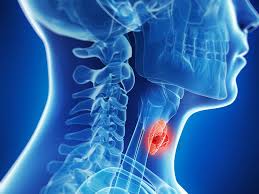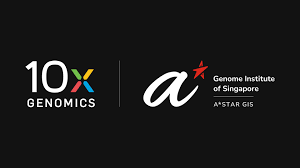Amanda Haupt, Business Unit Manager for Base Editing at Revvity, discusses how AI-engineered enzymes and the Pin-point™ platform are unlocking new levels of accuracy, accessibility, and therapeutic potential in next-generation gene editing.
How does Profluent’s AI-engineered adenine deaminase differ functionally from natural enzymes currently used in base editing, and what unique capabilities does it unlock within the Pin-point™ platform? Could you share insights into the speed, accuracy, and flexibility that this pairing introduces compared to existing tools?
Profluent’s AI-engineered adenine deaminases are not simply incremental improvements on natural enzymes, they’re proteins designed de novo to address known bottlenecks in base editing. Historically, adenine base editors have been built from a very limited set of evolved enzymes, which narrowed the options for developers. Profluent’s AI-driven process has generated a diverse portfolio of adenine deaminases with distinct editing windows, activity profiles, and specificities.
When paired with Revvity’s Pin-point™ base editing platform, this unlocks three new capabilities. First is precision, some variants in our aptamer-recruited configuration can narrow the editing window to a single nucleotide, reducing bystander edits. The second is flexibility, leveraging the modular Pin-point system allows swapping different deaminases to match the target context; this gives developers a “toolbox” instead of a one-size-fits-all editor. Last but not least, because the Pin-point system recruits the deaminase separately from the nuclease, ultra-low amounts can be delivered to achieve therapeutically relevant levels of editing, reducing off-target risks and preserving cell health, resulting in high efficiency even at low dosage.
Together, this gives developers a true toolbox approach with faster optimization, more precise tools, and a broader set of disease-relevant mutations that can now be addressed.
What specific therapeutic areas or disease targets stand to benefit most immediately from this AI-enhanced base editing system? For example, do you anticipate breakthroughs in rare genetic disorders, oncology, or broader applications such as regenerative medicine?
The first impact will likely be in areas where adenine mutations are common, which account for nearly half of pathogenic single-base changes. Examples include rare monogenic disorders (such as metabolic diseases and neuromuscular conditions), oncology drivers (oncogenes with A→G mutations), and certain immune-related diseases.
Longer term, the modularity of the platform supports more complex programs: regenerative medicine, engineered immune cells, and multiplex editing applications where precise control is essential. By expanding the range of editable mutations, this collaboration opens entirely new therapeutic programs that were previously blocked by biology or IP constraints. This partnership expands the menu of options available to developers in rare disease, oncology, and immune disorders.
Given that these enzymes are AI-designed rather than derived from nature, how do you anticipate global regulators will evaluate their safety, efficacy, and potential off-target risks? Are you engaging with agencies early to set precedents for AI-generated biomolecules in clinical use?
AI-designed proteins represent new ground for regulators, but the principles remain the same: demonstrate safety, efficacy, and control. We anticipate three key focus areas:
- Specificity & off-target risk: Early data suggest improved precision compared to legacy enzymes, a strong starting point for regulatory review.
- Predictability: AI design allows for rapid generation of candidates, but each still requires the same rigorous characterization as traditionally engineered or evolved enzymes.
- Transparency: Regulators will likely want clarity on how the AI models work and the rationale for chosen variants.
Is this partnership focused primarily on joint product development, licensing, or co-commercialisation? How do you envision responsibilities being divided between Revvity and Profluent as the programme advances, and what milestones can the industry expect in the near term?
This partnership is focused on enabling access to adenine base editors. Revvity holds the commercial rights to the Pin-point platform, and Profluent contributes its novel enzyme portfolio. Together, we’ve structured the collaboration so developers can obtain both technologies under a single streamlined license, backed by Revvity’s services and scientific expertise.
It’s less about co-commercialization in the traditional sense and more about democratizing access to next-gen base editing through a unified channel. In addition to the licensing opportunities, Revvity will leverage it’s expertise in RUO reagents and preclinical services to make sure that the deaminases can be accessed by scientists everywhere. This structure ensures developers, regardless of size or geography, can engage through a simplified process.
One of the long-standing barriers with traditional editors has been complex licensing agreements. How does this collaboration change the IP landscape for academic institutions, start-ups, and biotech partners seeking to use base editing? Will this platform make novel therapies more accessible and cost-efficient for developers worldwide?
Access to adenine base editors has historically been gated, creating cost and complexity barriers that limited who could even start programs. This collaboration flips that dynamic.
With a single license and single partner developers no longer need to negotiate multiple deals. Revvity and Profluent are committed to enabling broad access to all. Our flexible models will enable academic labs, startups, and biopharma alike to access clinically relevant ABEs without legacy encumbrances. Furthermore, by simplifying negotiations and reducing legal/IP complexity, developers can deploy resources toward R&D rather than licensing hurdles.
In short, it lowers barriers and accelerates timelines by creating opportunities for therapies that might otherwise never have left the drawing board.
Beyond adenine deaminase, do you see this AI-driven approach extending to other editing modalities, such as cytosine or dual-function editors? More broadly, how does this position Revvity in the increasingly competitive and fast-evolving gene editing ecosystem?
This is just the start. We expect AI-driven protein design to extend not just to adenine and cytidine editors, but also to new classes of enzymes and entirely novel editing chemistries. Pairing that innovation with the modular Pin-point framework ensures compatibility and rapid adoption.
Our role is to be the trusted enabler by providing modular tools, services, and expertise that advance in step with the science and help the ecosystem develop faster, safer therapies at greater scale. In a competitive field, our differentiation is modularity, flexibility, and access with a platform built to evolve as gene editing itself evolves.






















